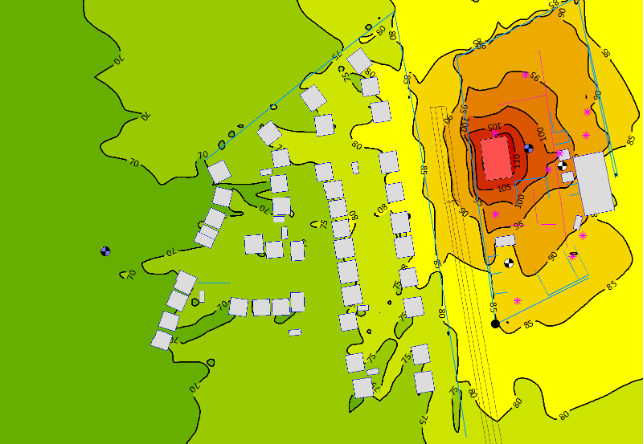BS4142 Noise Impact Assessment – Morris & Co. (Handlers) Ltd, Doncaster
Evidence-led assessment and modelling to support an Environment Agency permit variation for increased processing capacity.
Authored by Paul A. Schmitz MBA CEng MIMechE MIoA — Conducted: 11–12 March 2022 & 20 December 2021 • Published: 20 September 2022
Key Project Facts
| Client | Morris & Co. (Handlers) Limited |
|---|
| Location | Bankwood Lane, Rossington, Doncaster, DN11 0PS |
|---|
| Sector | Metal Recycling / Environmental Permitting |
|---|
| Services Provided | BS 4142 Noise Impact Assessment; Acoustic Modelling (SoundPLAN 8.2); Source-level Mitigation Design |
|---|
| Standards Applied | BS 4142:2014+A1:2019; BS 8233:2014; ISO 3744 / 6395; Environment Agency NIA Guidance V1.0 |
|---|
| Outcome | Demonstrated no adverse impact at receptors with mitigation under increased throughput; evidence base provided to support permit variation. |
|---|
Project Summary
Environmentally Sound Limited assessed environmental sound emissions from a metal recycling facility adjacent to a new housing development. Using traceable measurements and calibrated SoundPLAN modelling, we evaluated current operations, stress-tested increased-throughput scenarios, and designed practical mitigation so the community noise climate would not worsen.
Background
The site comprises stationary and mobile plant including a main shredder, telehandlers, a heavy-duty screen, front loaders, and mist cannons. With housing under construction to the west, the regulator required robust evidence that capacity increases would avoid significant adverse effects at the nearest sensitive receptors (NSRs).
Methodology
Measurements & Instrumentation
NSR monitoring before/during/after operations; site source characterisation with 15-minute intervals in line with BS 4142.
Precision sound level meters (Rion NA-52) with pre/post calibration records retained for traceability.
Meteorological conditions logged; adverse weather periods excluded from assessment datasets.
Acoustic Modelling
3D model in SoundPLAN 8.2 using DEFRA LiDAR (levelled where not representative) and Doncaster Council housing layouts.
Octave-band inputs for individual sources; canopy updated via NSR and near-field measurement calibration.
Scenarios: current operation; +3 dB shredder load; doubled active sources (worst case); with/without mitigation.
Findings
Background (LA90, 15 min): 50 dB at NSR South.
Specific (LAeq, 15 min): 61 dB during operation → Rating level 64 dB after +3 dB feature correction; excess over background = 14 dB.
Exaggerated simulations (shredder +3 dB or doubled sources) produced limited 55 dB LAeq patches behind barriers; amenity criteria remain controllable with source-level measures.
Mitigation & Outcome
Source-level mitigation: Upgraded main shredder canopy (250 mm masonry walls on N/W/S + profiled steel cladding) to increase transmission loss while maintaining access.
Result: With mitigation, predicted residential exposure is the same or lower than current operation, even with a higher shredder load.
Benefit: Provides the Environmental Agency with a defensible basis to permit increased throughput without worsening community noise climate.
Uncertainty & Next Steps
Primary uncertainties: future operational load and back-of-plot levels along the noise protection wall (access restricted during construction).
Recommendation: Post-construction verification monitoring to confirm amenity levels and further reduce model uncertainty.
 Representative SoundPLAN noise contour map (1.5m receiver height). Higher levels localised near the canopy; barriers protect residential plots.
Representative SoundPLAN noise contour map (1.5m receiver height). Higher levels localised near the canopy; barriers protect residential plots.
Need a defensible industrial noise assessment? Speak directly with a Chartered Engineer.